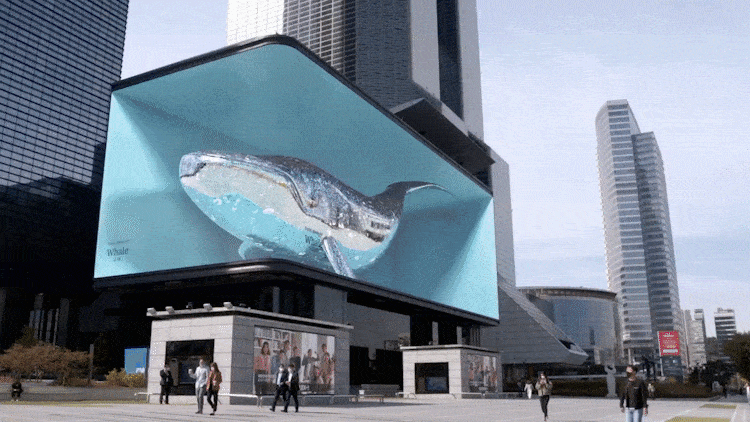The 3D LED screen can display dark and bright and vivid details in a way. It features high refresh, high greyscale and high contrast so that viewers can enjoy the impact of being immersed in a landscape view, but without the screen reaching their eyes.
Being a prominent display on LED screens in recent years, in more and more areas of indoor display HD, how to implement 3D display technology suitable for screen LEDs is also starting to attract a lot of attention.

So do you know what the main 3D technologies for 3D LEDs are?
1. 3D glass display technology: 3D technology on glass, we can divide into 3 main forms: art said, light polarization and active shutter, people often call colour separation method, light division and time division.
2. 3D deflection 3D technology: 3D glass red and blue passive filters are used together.
This technique is the oldest technology, simple in image principle and relatively inexpensive to implement - the glass is just a few dollars - but the 3D results are also the least of the goods.
3. Polarised 3D technology: Also known as polarised 3D technology, it uses passively polarised glasses.
The type of optical polarisation 3D is based on the principle of resolving light with "vibrations" to break up the original image, first through the level of the image being divided into two groups of vertically polarised light and photo-polarised light, followed by a different level of glass about 3 D. The polarisation lens is oriented in the direction of polarisation so that the person around the eye can obtain two groups of images after the synthetic stereoscopic image of the brain.
4. Shutter 3D technology: This 3D technology is most widely used in televisions and projectors and is relatively resourceful and visually stunning. It is happily used by many manufacturers, but its proper 3D glasses are relatively expensive.
Currently, brands including LG, Samsung, Panasonic and Skyworth have launched 3D TVs that use Active 3D shutter technology.
The only 3D LED display mode creates a spatial dimension. Combined with stage lighting, it will immerse a light party, dipping into immersion and providing a strong visual impact for the audience.
In addition, the demand for artistic expression has increased in recent years and the future prospects of the role-playing stage suggest to be very bright.
.jpg)
For companies producing 3D eye-light screens, it is recommended to seek breakthroughs in the application of 3D eye-light screens starting from the art field to promote a leap forward in industrial technology.
There are also several breakthroughs in the use of 3D LED screens.
In the future, AR technology, VR and 3D photo technology can be combined to enable 2D interactive smart screens.
However, in a practical perspective, its application on the dance beauty stage will be more realistic.
Everyday applications are inappropriate, but also need to follow a high-end customisable path.
In addition, interactive galleries and 3D LED screens have been used for a long time and are relatively mature application technologies. Intensive development of interactive exhibitors and theatres could also take a sunny path.
Hot news
Posted by: Admin - Date: 07-01-2023
Last Page: How to improve performance Improve performance, improve quality of life
Next Page: Transparent LED screen wall design leads the new trend of outdoor advertising
- Digital Showroom System | Smart Interactive & Display Solutions
- Auditorium LED Display | Modern Visual Solution for Large-Scale Conference Spaces
- IMMERSIVE Showroom System | Advanced Visual Display Solutions for Enterprises & Real Estate
